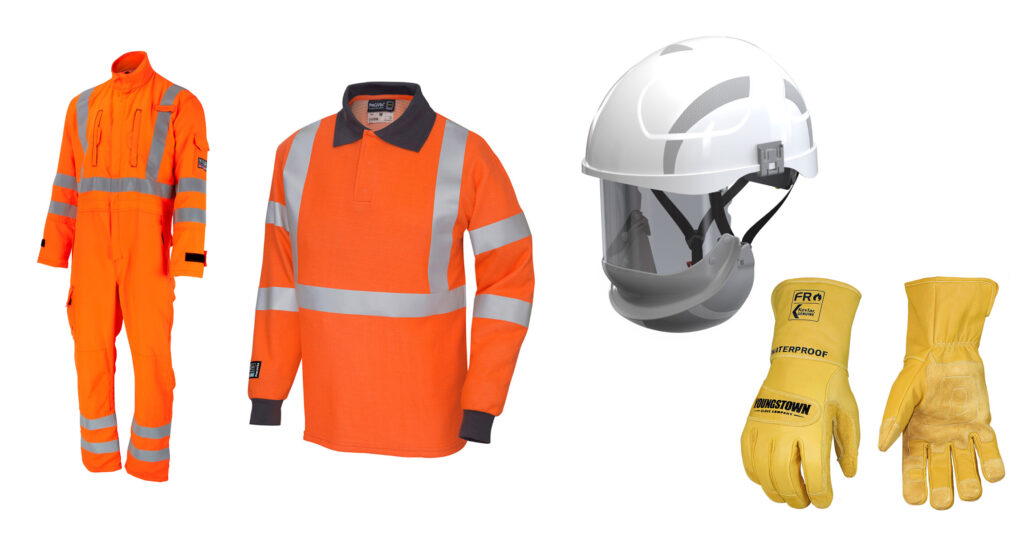
Did you know?
The noise generated during an arc flash event can be deafening and add to the dangers faced by workers? In 2018, the HSE recorded two cable strike incidents, one of which resulted in a fine of £600,000 plus costs. In this blog, we’ll explore how arc flash incidents impact various job roles and industries, shedding light on the vital measures that can save lives.
Understanding Arc Flash
An arc flash incident can cause serious injury and, in some cases, fatalities. Arc flash occurs when an electrical explosion or discharge is caused by a connection either through the air to the ground or between different voltage phases within an electrical system.
It can unleash an intense burst of energy, manifesting as blinding light, scorching heat, loud sound, and the release of molten metal and shrapnel. Due to the violent nature of arc flash events, comprehensive safety measures, including proper training, equipment, and work practices, are essential to mitigate the potential consequences and ensure the well-being of those working near electrical systems.
What causes Arc Flash?
Arc flash incidents can arise from accidental contact between an energised conductor, such as a busbar or wire, and another conductor or a grounded surface. Equipment malfunctions can also trigger these events.
While it’s commonly believed that the risk of arc flash is more pronounced in high-voltage scenarios, substantial evidence suggests that low-voltage situations may pose a greater risk. Research indicates that, on average, the severity of the hazard is more significant at lower voltage levels than at higher ones.
The potential for harm in an arc flash event depends on several factors, including the magnitude of the current flowing in the Arc, the duration of the arcing fault, the distance between the conductive components bridged by the Arc, the presence of electrodes, the confinement around the Arc, the chemical compositions of the conductors and surrounding materials, and the proximity of workers to the Arc. These elements collectively influence the level of danger associated with arc flash incidents.
What are the common causes of arc flash?
– A lack of awareness and inadequate training
– Loose connection and exposed live components
– Engaging in live work on damaged equipment, such as cables
– Improper use of instruments not suitable for the task
– Dropping uninsulated tools or metallic objects
– Equipment failure
What industries are at risk of Arc Flash??
Arc flash affects various industries where workers are exposed to electrical hazards. The following industries are at a higher risk due to the nature of their work:
- Electrical utilities: Workers in electrical utilities face significant arc flash hazards during maintenance and repair of high-voltage electrical systems.
- Manufacturing: Manufacturing facilities with heavy machinery and complex electrical systems often have a high risk of arc flash incidents.
- Construction: Electricians and workers involved in construction often deal with live electrical systems, thus putting them at risk.
- Oil and Gas: Flammable materials and intricate electrical setups in oil and gas operations make this industry vulnerable.
- Data centres: The reliance on intricate electrical infrastructure in data centres means that employees in this field must be vigilant.
EVs and Arc Flash Hazards
The rapid rise of electric vehicles (EVs) in recent years has introduced a new dimension to arc flash hazards. EVs rely on high-voltage electrical systems to power their batteries, and as charging infrastructure expands, so does the potential for arc flash incidents. These incidents can occur during maintenance, servicing, or even in accidents involving EVs. As such, it’s increasingly important for technicians and first responders to be aware of the unique electrical risks associated with EVs and to take necessary precautions, including using arc-rated protective gear when working on or near these vehicles to ensure their safety in this evolving automotive landscape.
How to prevent Arc Flash
Aside from isolating the power source, completely eradicating the arc flash hazard is challenging. Nevertheless, there are steps you can take to diminish the likelihood and seriousness of these dangers.
While the probability of an electric arc or worse occurring is relatively low, the potential severity is notably high. Several control measures can be adopted to mitigate the hazard and its likelihood. For instance:
– De-energising electrical equipment
– Providing appropriate Personal Protective Equipment (PPE)
– Maintaining a safe distance
– Lowering the energy released during an incident
– Conducting a comprehensive risk assessment
– Providing on-site workers with training to manage risks and interrupt faults.
– Clearly mark electrical equipment with arc flash labels and signage.
For more information or advice on how to protect yourself and your workers from Arc Flash, contact our specialist Campbell Turner on 01793 484237.





![stronghold global logo[94]](https://www.strongholdglobal.com/wp-content/uploads/2022/03/Stronghold-Global-Logo94.png)




